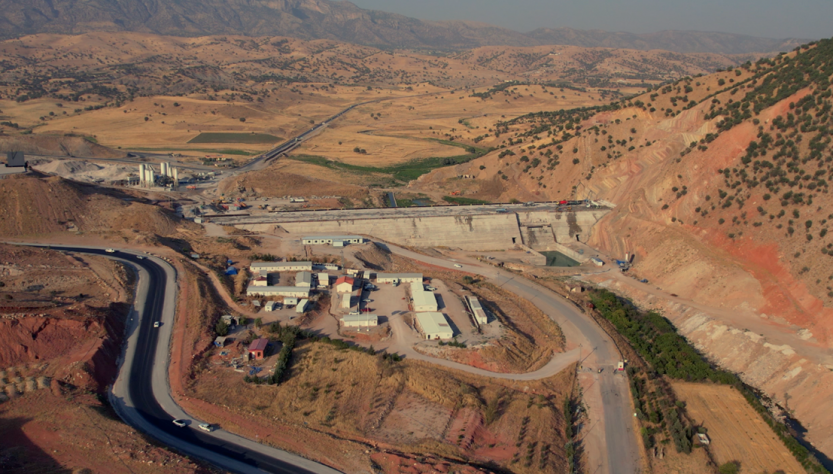In the field of hydraulic engineering, concrete dams stand as vital structures, spanning streams or lakes to harness water resources for myriad purposes such as irrigation, human consumption, industrial processes, and hydroelectric power generation. In Iraq, where water policy and resource management have long posed challenges, civil engineers bear the responsibility of devising pragmatic solutions to uplift living standards. Foremost among their concerns is ensuring the structural stability of concrete dams while simultaneously optimizing their economic design to minimize material costs and maintain safety standards. This critical task necessitates a comprehensive study of stability analysis due to the diverse array of static and hydrodynamic forces acting upon these imposing structures.
Water scarcity is a global predicament, with many nations grappling to fulfill their growing water demands with dwindling resources. Consequently, these countries seek efficient solutions to judiciously manage their water reservoirs, both for the present and future. Constructing dams emerges as a primary and practical approach, contingent on sound policies. Dams, as essential infrastructure, wield considerable influence in safeguarding and regulating water resources using precise methodologies. Additionally, these mammoth structures serve as powerhouses, further underscoring their significance. For regions with high water levels, concrete dams emerge as the optimal choice, accentuating the imperative of their safe design to avert calamitous consequences. Achieving this entails exhaustive hydrological studies, rigorous site investigations, and meticulous data analysis to ascertain the dam’s resilience against international safety benchmarks.
The cornerstone of this endeavor is the concrete gravity dam, an imposing edifice reliant on gravity itself, owing to its substantial weight and its grounding to the earth. Given the multifarious static and hydrodynamic forces it contends with, the design of such a dam necessitates flexibility to accommodate a spectrum of scenarios, ensuring safety remains uncompromised. Altering the dam’s upstream face by augmenting its mass represents one strategy to preempt potential safety hazards stemming from various failure modes. The paramount objective remains the stability of concrete dams, an indispensable assurance to safeguard both human lives and the infrastructure downstream.
The Kurdistan region in Iraq assumes strategic importance, buoyed by its economic vitality, tourist allure, and burgeoning population. This growth spurs the imperative to harness water resources effectively to meet diverse societal needs. The Gumaspan Dam, slated to be Erbil Governorate’s largest, is set to become the third-largest dam in the Kurdistan Region upon completion, boasting a reservoir capacity of 115 million cubic meters. This monumental undertaking promises to elevate the local water table, offering sustenance to 16,000 square meters of farmland and fostering aquaculture development. With a budget estimated at ninety-five billion Iraqi dinars, the project has not only employed three hundred engineers and technicians but has also enriched the local community, with 75% of the workforce hailing from the region.
Presently, the dam is 56% complete, with the remaining 44% slated for conclusion by the middle of the next year. Constructed using Reinforced Cement Concrete (RCC), the dam spans 513.67 meters in length and soars to a height of 69.25 meters. It is projected to amass 47,839,000 cubic meters of water annually. Designed in adherence to international specifications, the rear face of the dam features terraces, serving to dissipate the energy of rain-induced runoff. Furthermore, the dam boasts distinctive architectural elements that not only enhance aesthetics but also provide spaces for relaxation and visual enjoyment.
Notably, one of the project’s most commendable aspects is its execution by national engineering and technical talents, fostering the development of local skills and capabilities. This emphasis on self-reliance represents a significant achievement, bolstering confidence and opening avenues for extensive growth and development.


